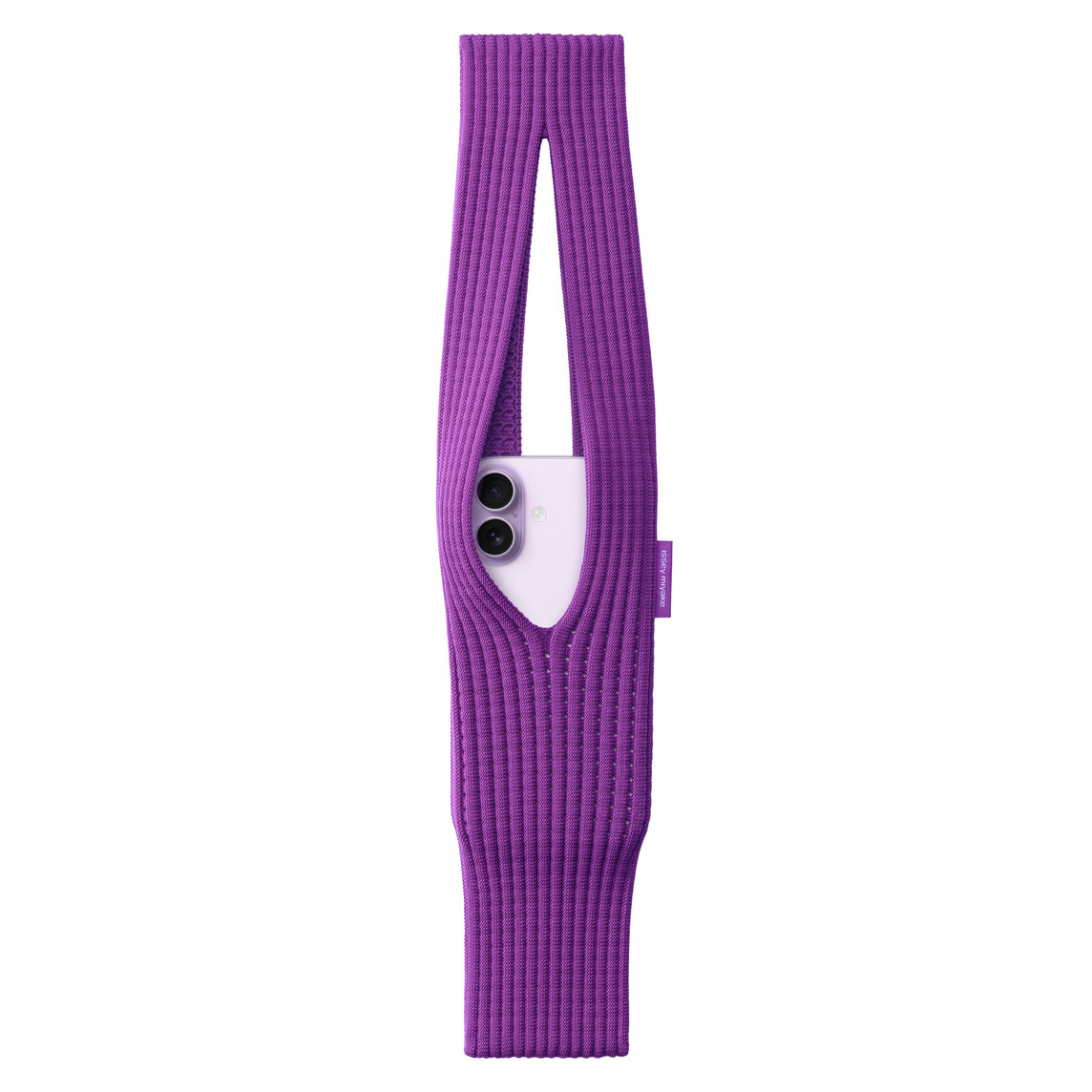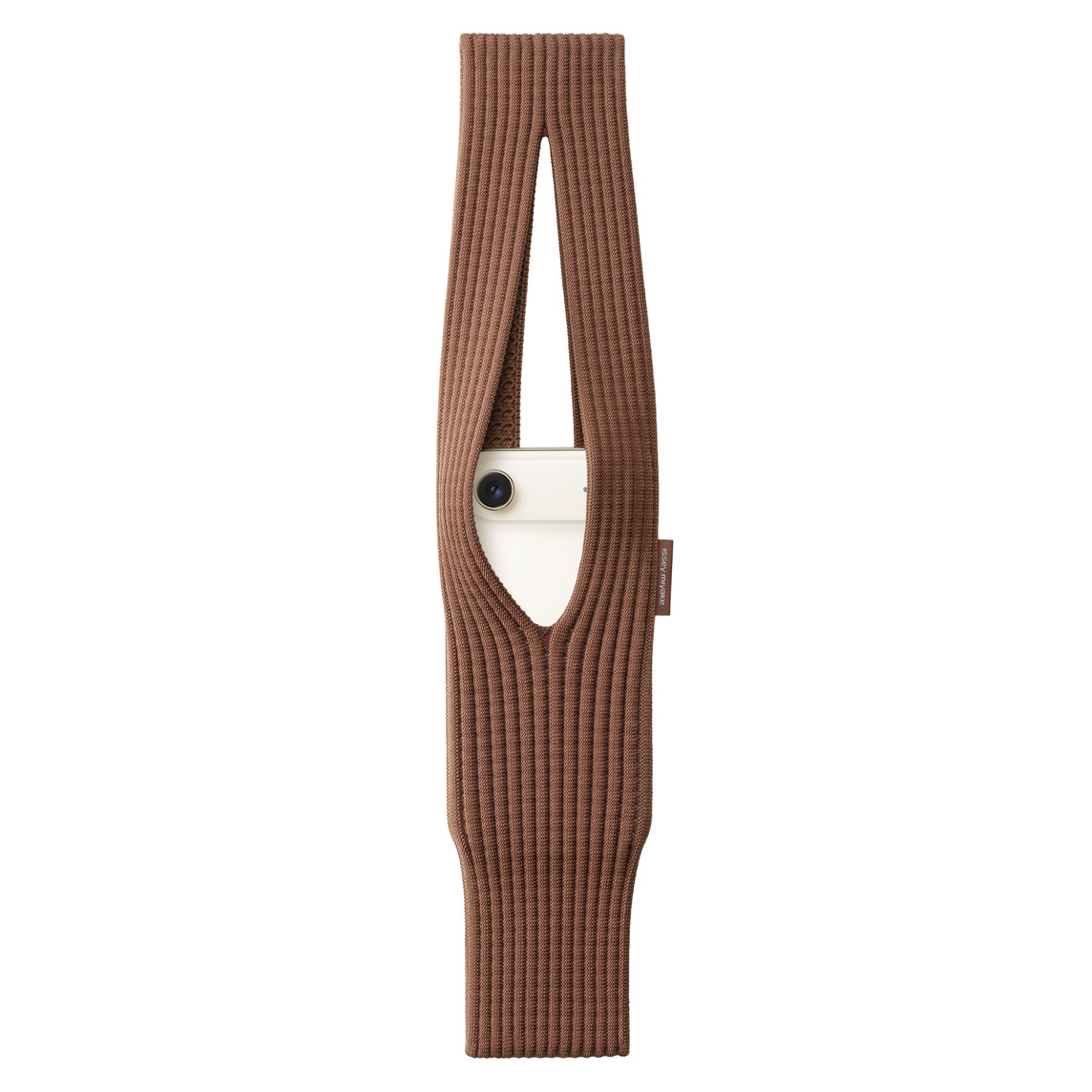Sustainable Manufacturing
Explore the sustainable manufacturing behind iPhone Pocket.

What You'll Learn
- Zero-waste 3D knitting eliminates fabric scraps
- Durable construction means years of use, not seasons
- Synthetic yarns chosen through lifecycle analysis
- Energy-efficient manufacturing process
- Minimal, recyclable packaging
- Local manufacturing in Japan reduces emissions
- Designed for end-of-life recycling
The iPhone Pocket represents a new approach to sustainable manufacturing—one that prioritizes quality, longevity, and minimal waste over marketing claims. Both Apple and ISSEY MIYAKE have committed to environmental responsibility, and the iPhone Pocket embodies these commitments through its manufacturing process, material choices, and design philosophy. Understanding the sustainability story reveals that the iPhone Pocket isn't just environmentally friendly—it's a model for how fashion accessories can be manufactured responsibly.
Zero-Waste 3D Knitting
Traditional cut-and-sew manufacturing wastes 15-20% of fabric—pieces cut from flat fabric leave scraps that can't be used. The iPhone Pocket's 3D knitting process produces virtually zero waste. The entire pocket is knitted as a single piece, using only the exact amount of yarn needed. There are no scraps, no offcuts, no waste fabric. This isn't just more efficient—it's fundamentally different from traditional manufacturing. The environmental impact of this approach is significant: less material consumption, less waste to dispose of, and lower overall resource use. This is sustainability through smart engineering, not through offsetting or recycling.
Durable by Design
The most sustainable product is one you don't need to replace. The iPhone Pocket is engineered for longevity: high-quality synthetic yarns that resist wear, seamless construction that eliminates weak points, and structural pleating that maintains shape over years. The design is timeless—it won't look dated next season. This durability means you buy one iPhone Pocket and use it for years, not seasons. Compare this to fast fashion accessories that need replacement every few months. The environmental impact of one durable product is far less than multiple disposable ones. This is sustainability through quality.
Material Selection

Design and craftsmanship: Sustainable Manufacturing
The iPhone Pocket uses specially engineered synthetic yarns rather than natural fibers. This might seem counterintuitive for sustainability, but it's a thoughtful choice. These synthetic yarns are more durable than natural alternatives, require less water and pesticides to produce than cotton, and can be engineered for specific performance characteristics. The yarns are also recyclable at end of life. ISSEY MIYAKE and Apple chose materials based on lifecycle analysis, not just on whether they're 'natural.' This science-based approach to material selection ensures the iPhone Pocket's environmental impact is minimized across its entire life.
Energy-Efficient Manufacturing
The 3D knitting process is more energy-efficient than traditional manufacturing. There's no cutting (which requires energy), no sewing (which requires machines and thread), and no finishing processes like hemming. The knitting machines are modern and energy-efficient. The manufacturing facility in Japan uses renewable energy where possible. The precision of computerized knitting also reduces defects, meaning fewer rejected products and less wasted energy. While manufacturing any product requires energy, the iPhone Pocket's process minimizes energy use through efficiency and precision.
Minimal Packaging
The iPhone Pocket's packaging reflects Apple's commitment to minimal, recyclable packaging. The box is made from recycled materials and is fully recyclable. There's no plastic wrap, no unnecessary inserts, no wasteful presentation materials. The packaging is designed to protect the product during shipping while using minimal materials. This approach extends the sustainability story beyond the product itself to every aspect of the customer experience. Even the packaging design considers environmental impact.
Local Manufacturing
The iPhone Pocket is manufactured in Japan, where both ISSEY MIYAKE's expertise and the specialized knitting machines are located. This local manufacturing reduces transportation emissions compared to global supply chains. It also ensures high labor standards and quality control. While 'local' is relative for a global product, concentrating manufacturing in one location with expertise and infrastructure is more sustainable than fragmented global production. This approach also supports Japanese textile industry and craftsmanship traditions.
End-of-Life Considerations
The iPhone Pocket is designed with end-of-life in mind. The synthetic yarns are recyclable. The seamless construction means no mixed materials that complicate recycling. When your iPhone Pocket eventually reaches end of life (which should be years, not months), it can be recycled rather than landfilled. Apple and ISSEY MIYAKE are also exploring take-back programs where used iPhone Pockets can be returned for recycling. This circular thinking—considering what happens after use—is essential for true sustainability.
Conclusion
The iPhone Pocket's sustainability story is about smart design, quality materials, and efficient manufacturing—not about marketing claims. Zero-waste 3D knitting, durable construction, thoughtful material selection, and end-of-life planning create a product with minimal environmental impact. This is sustainability through engineering and design excellence, proving that fashion accessories can be both beautiful and environmentally responsible. The iPhone Pocket sets a new standard for what sustainable manufacturing can achieve.
Frequently Asked Questions
How does Sustainable Manufacturing work with iPhone Pocket?
The iPhone Pocket's 3D-knitted design makes it perfect for sustainable manufacturing. The expandable structure adapts to your needs while maintaining security and accessibility.
Which color is best for Sustainable Manufacturing?
Color choice depends on your personal style and use case. For sustainable manufacturing, consider both aesthetic preferences and practical factors like visibility and wear patterns.
Should I choose short or long strap for Sustainable Manufacturing?
Short straps ($149.95) offer compact portability, while long straps ($229.95) provide hands-free versatility. For sustainable manufacturing, consider how you typically carry your phone and what activities you'll be doing.
Related Articles
Ready to Shop?
Explore all 11 iPhone Pocket colors and find the perfect match for your needs.
View All Products